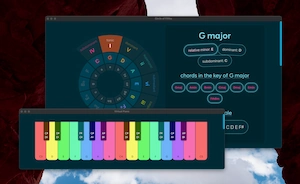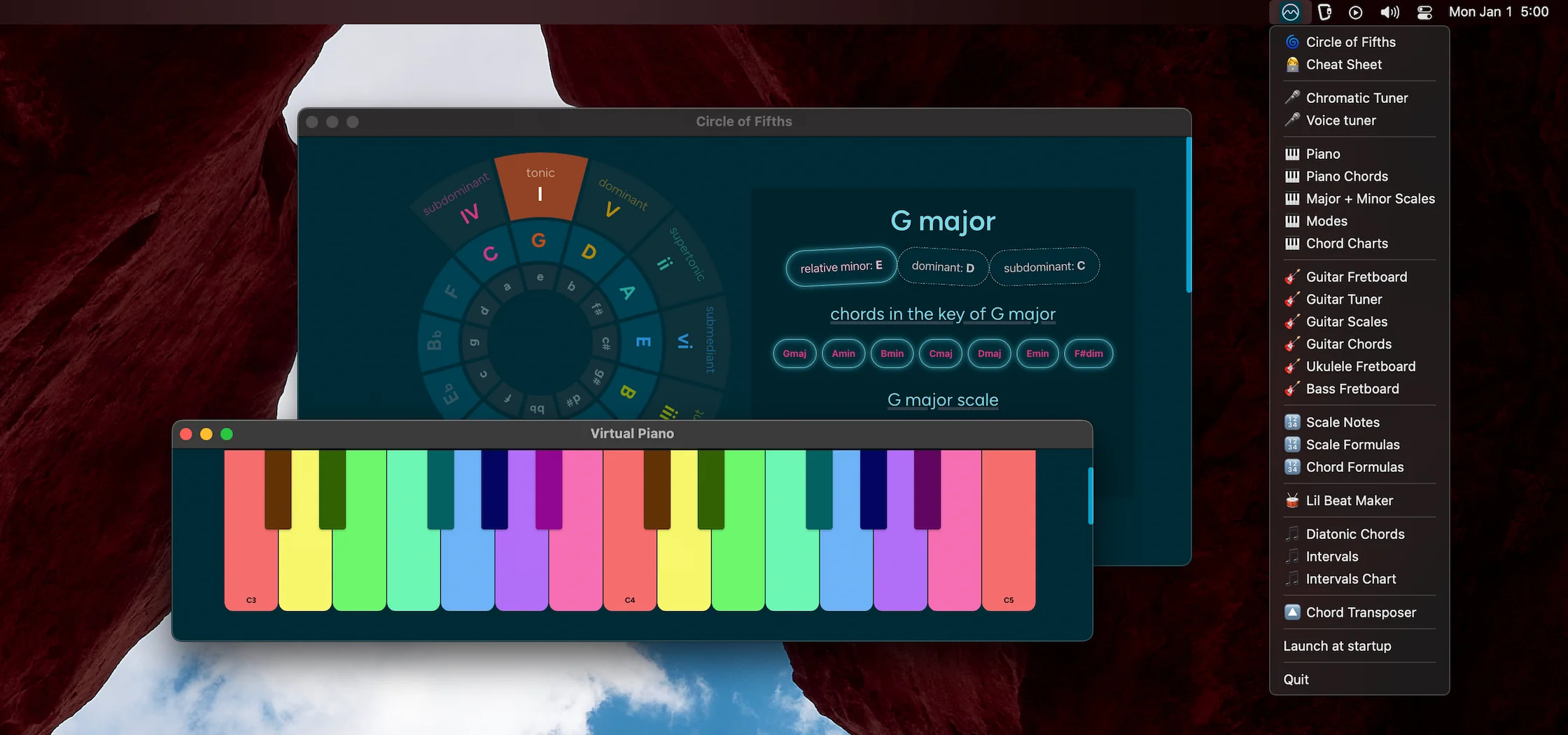Music Intervals Chart: Quickly Name the Intervals Between Notes
🤹♂️ Here's a visual music interval chart where you can quickly see the
intervals between two notes for simple intervals. Just select a starting note
and see all the intervals in chromatic order.
Plus this visual helper makes it easy to see the interval inversions at the
same time. For example, the
interval between C and C♯ is a minor 2nd, and that interval inverted,
between C♯ and C, is a major 7th.
You may also like this piano intervals tool and this
interval calculator.
D♭ C C♯
D♭
E♭ C D♯
E♭
G♭ C F♯
G♭
A♭ C G♯
A♭
B♭ C A♯
B♭
Notice how an interval and its inversion always add up to 9. For example, major 7th inverts to minor 2nd (7 + 2 = 9).
Notice also how major intervals invert to minor intervals and vice versa. Perfect intervals stay perfect when inverted. Finally, diminished intervals invert to augmented intervals and vice versa.
Intervals semitones chart
Here's a table with the different intervals and the number of semitones (half-steps) that form these intervals. This chart also includes compound intervals up to 2 octaves:
| Name | Semitones |
|---|---|
| Unison (P1) | 0 |
| Minor 2nd (m2) | 1 |
| Major 2nd (M2) | 2 |
| Minor 3rd (m3) | 3 |
| Major 3rd (M3) | 4 |
| Perfect 4th (P4) | 5 |
| Tritone (Augmented 4th (A4) or Diminished 5th (d5)) | 6 |
| Perfect 5th (P5) | 7 |
| Minor 6th (m6) | 8 |
| Major 6th (M6) | 9 |
| Minor 7th (m7) | 10 |
| Major 7th (M7) | 11 |
| Octave (P8) | 12 |
| Minor 9th (m9) | 13 |
| Major 9th (M9) | 14 |
| Minor 10th (m10) | 15 |
| Major 10th (M10) | 16 |
| Perfect 11th (P11) | 17 |
| Augmented 11th (A11) or Diminished 12th (d12) | 18 |
| Perfect 12th (P12) | 19 |
| Minor 13th (m13) | 20 |
| Major 13th (M13) | 21 |
| Minor 14th (m14) | 22 |
| Major 14th (M14) | 23 |
| Fifteenth (aka double octave) (P15) | 24 |



